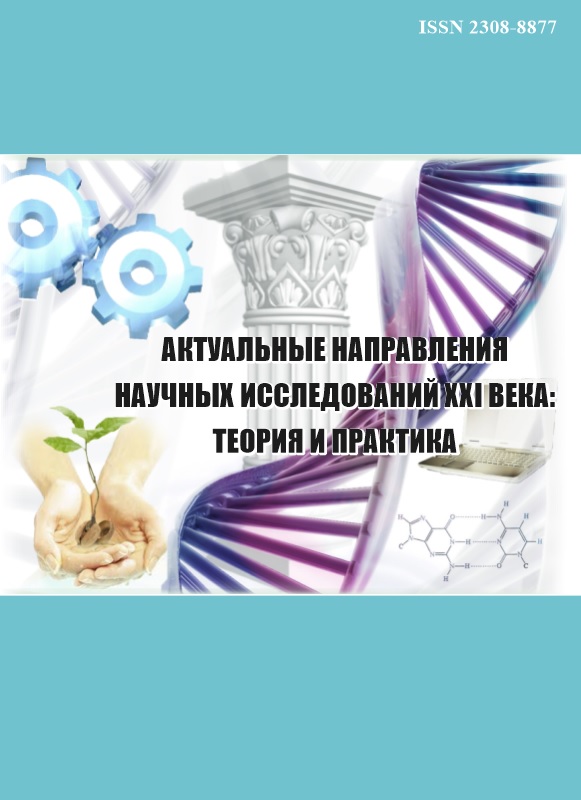Voronezh, Russian Federation
Voronezh, Russian Federation
Voronezh, Voronezh, Russian Federation
to date, the main parameters for assessing the state of the forest are the average age, height, diameter, and completeness of the main forest-forming rocks, expressed in meters, fractions of a meter, or cubic meters. At the same time, on the same test areas, other measurement measures are used for soil research: milligrams, grams, percentages, moles, etc. Naturally, it is impossible to combine these indicators when characterizing the forest environment. To do this, first of all, you should choose a single system of measures, parameters and indicators that combine the biogenic and lithogenic parts of the landscape. Knowing that their interaction is based on energy and mass exchange, we suggest using measures common to both subsystems. The initial indicators for quantifying the oxygen-producing and carbon-depositing functions, as well as the energy accumulated in the primary products of forest ecosystems, are the elements of biological productivity expressed in weight units. The object of research – Voronezh upland oak forest, with a total area of more than 7 thousand hectares, is the Central organizing element of the entire urban ecosystem of Voronezh. The tree stand is represented by coniferous crops along the left Bank of the floodplain terraces, as well as broad-leaved forest plantations spread on the riverine slopes of the watershed.
Voronezh upland oak forest, carbon, forest, biological productivity, biodiversity, biomass, forest soils, urban green spaces, urban ecosystem
ВВЕДЕНИЕ
В само понятие “лес” часто вкладывается его способность создавать деловую древесину, производить лесоматериалы и другую лесную продукцию.
К категории эксплуатационных лесов относится почти половина лесов лесного фонда России, и они в основном используются для заготовки древесины в промышленных целях. Вместе с тем леса обладают большим потенциалом для развития использования лесов, не связанных с заготовкой древесины [1].
Стремительная урбанизация территории сокращает площадь лесных массивов. В результате снижаются размеры фотосинтеза, обменных процессов, продуцирования кислорода, депонирования углерода и т.д. Все это заставляет задуматься о главном смысле существования лесов на планете.
Лес рассматривается как элемент окружающей нас природы, компонент ландшафта, часть многофункциональной динамической системы. А что если лес представить не частью системы, а целой системой взаимодействия атмосферных и литосферных процессов.
Атмосфера имеет свой вещественный состав, свою плотность вещества, свои виды экзогенной, солнечной энергии, а в литосфере концентрируются свои химические элементы, связи, эндогенная энергия – энергия ядра.
1. Alimov A.F., Altuhov Yu.P., Amirhanov A.M., Bobylev S.N., Bogolyubov S.A., Bol'shakov V.N., Bukvareva E.N., Vinogradov M.E., Vinogradov V.G., Gunin P.D., Gusev A.A., Danilov-Danil'yan V.I., Dgebuadze Yu.Yu., Dobrovol'skiy G.V., Zhuchenko A.A., Zavarzin G.A., Zaharov V.M., Isaev A.S., Il'yashenko V.Yu., Martynov A.S. i dr. Nacional'naya strategiya sohraneniya bioraznoobraziya Rossii. Prinyata na Forume po sohraneniyu zhivoy prirody Rossii (Moskva, iyun', 2001) / Rossiyskaya akademiya nauk, Ministerstvo prirodnyh resursov RF, Proekt GEF «Sohranenie bioraznoobraziya». Moskva, 2001.
2. Odnoralov G.A., Tihonova E.N., Tregubov O.V., Golyadkina I.V. Litogennaya osnova produktivnosti Voronezhskoy nagornoy dubravy // Lesotehnicheskiy zhurnal.2017. T.7. №2(26). S. 26 - 34.
3. Pyatyy nacional'nyy doklad. Moskva: Ministerstvo prirodnyh resursov i ekologii Rossiyskoy Federacii, 2015. 124 s. - ISBN 978-5-906599-12-4.
4. Remezov N.P., Pogrebnyak P.S. Lesnoe pochvovedenie. Moskva: Lesnaya promyshlennost', 1965. 324 s.
5. Tarankov V.I. Monitoring lesnyh ekosistem: uchebnoe posobie. Voronezh: Voronezhskaya gosudarstvennaya lesotehnicheskaya akademiya, 2006. 300 s.
6. Alcamo J., Bennet E.M. et al. Ecosystems and human wellbeing: a framework for assessment / Millennium Ecosystem Assesment, Island Press, 2005.
7. Costanza R., d’ Arge R., de Groot R., Farber S., Grasso M., Hannon B., Limburg K., Naeem S., O’Neill R.V., Paruelo J., Raskin R.G., Suttonkk P., van den Belt M. The value of the world’s ecosystem services and natural capital // Nature. vol.387. 1997. Rr. 253-260.
8. McCann, K.S., 2000. The diversity-stability debate // Nature. 405, Rr. 228-233. https://doi.org/10.1038/35012234.










